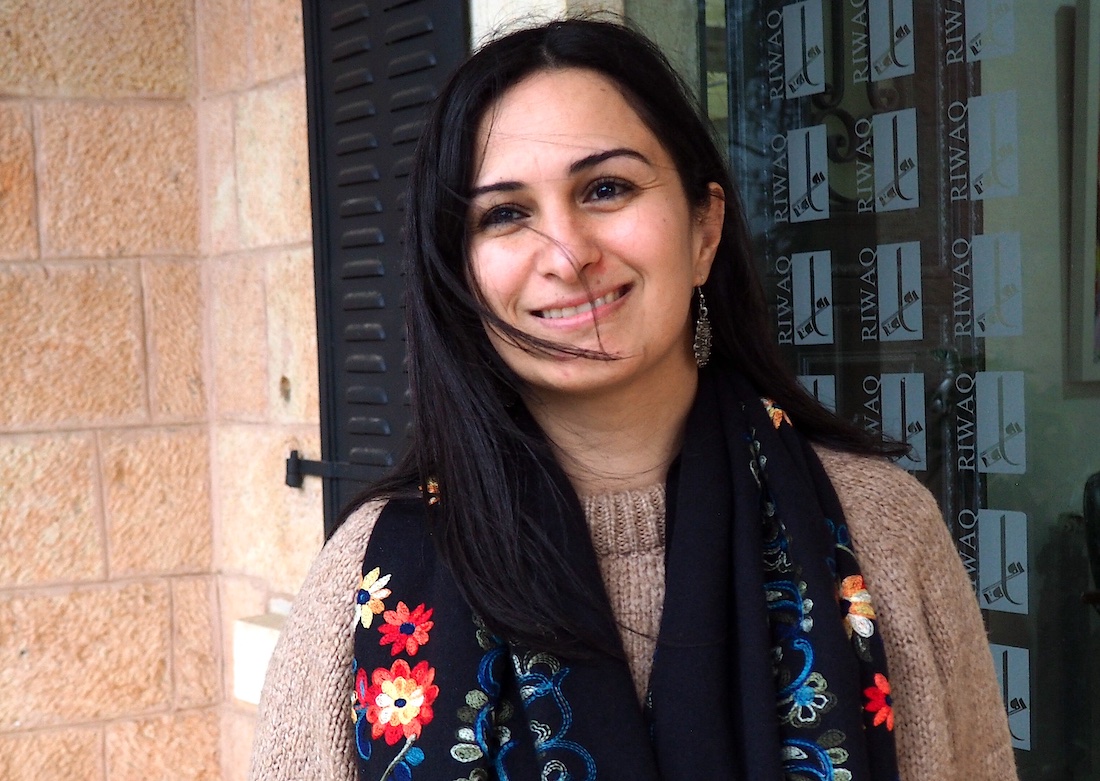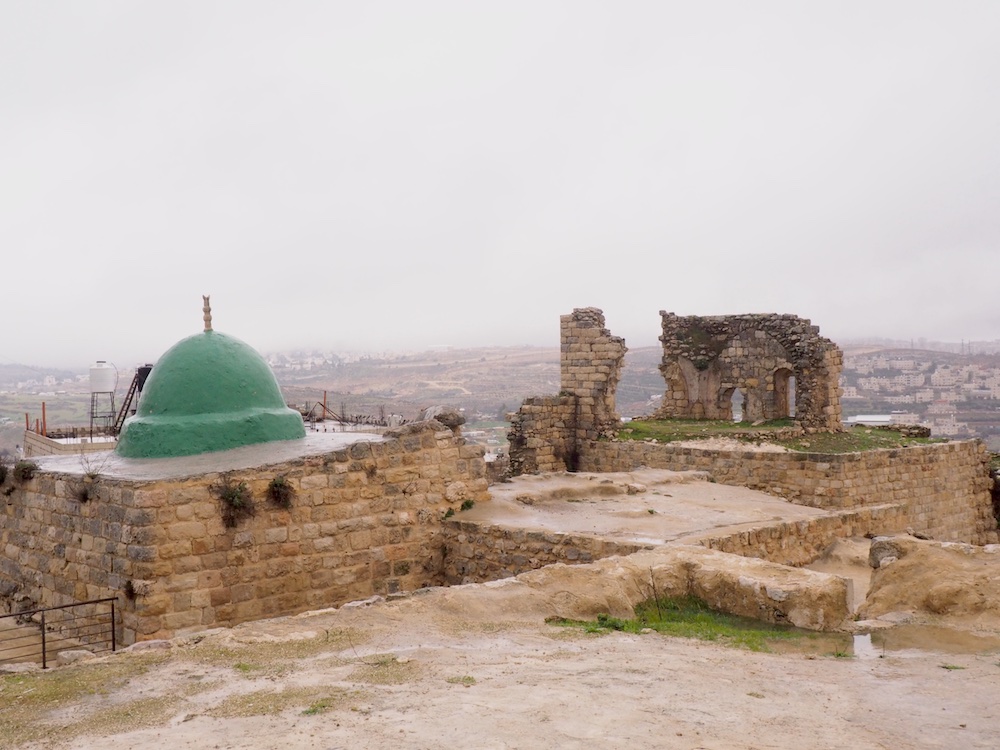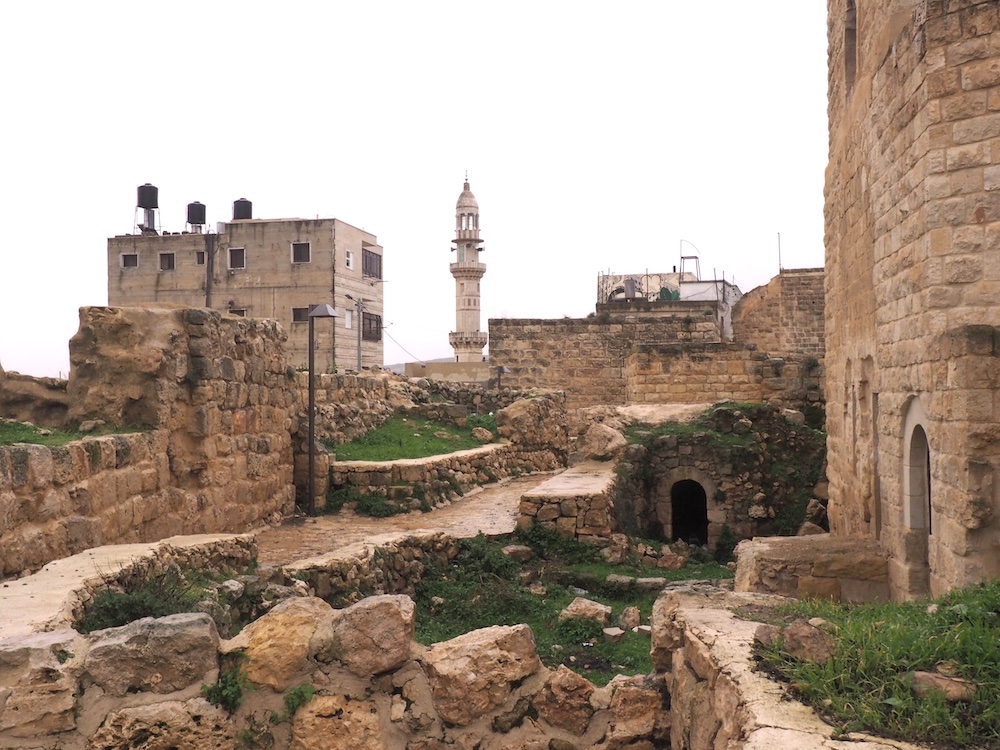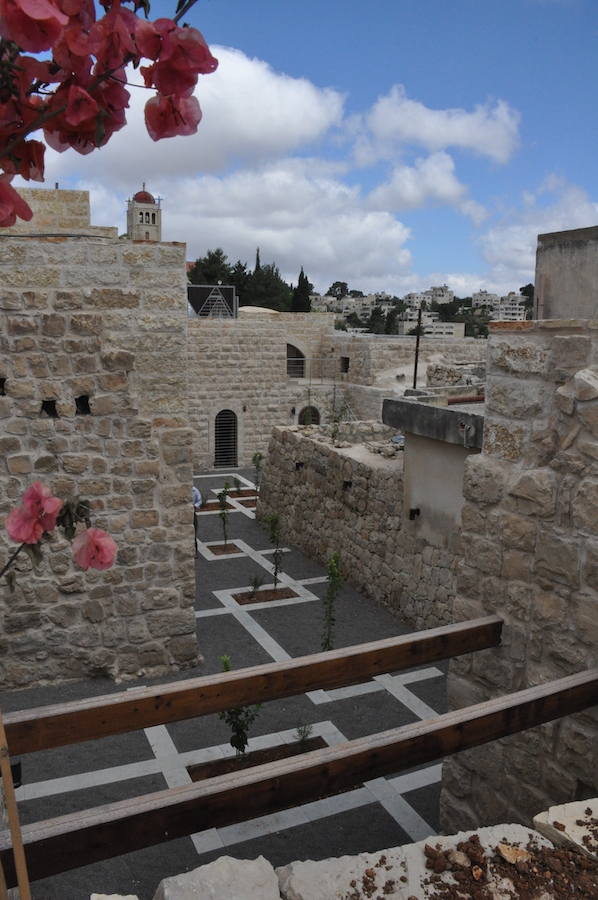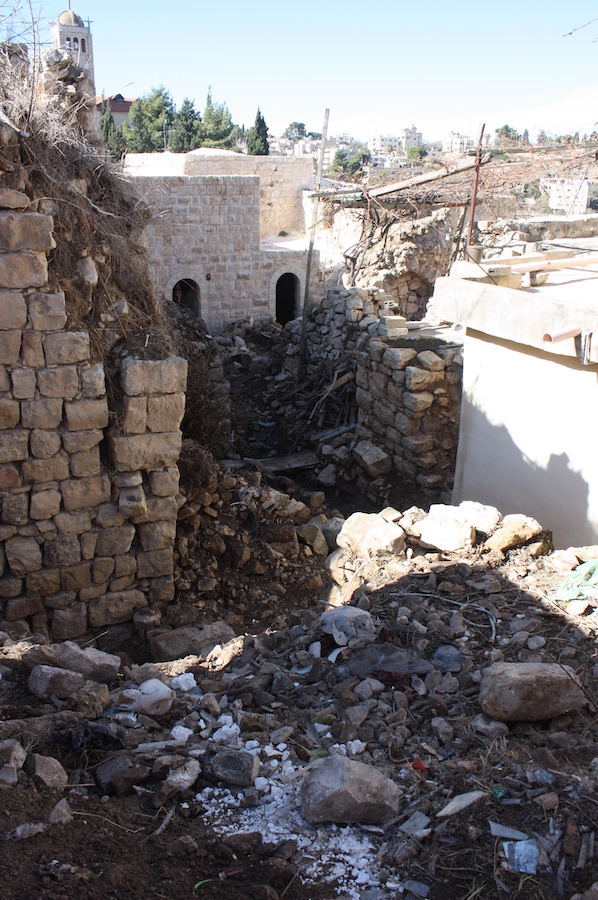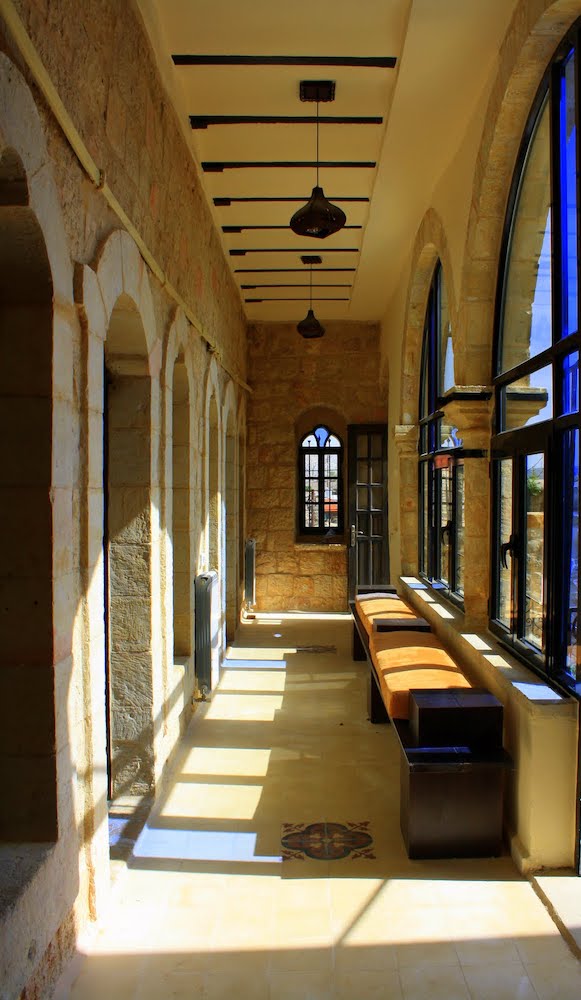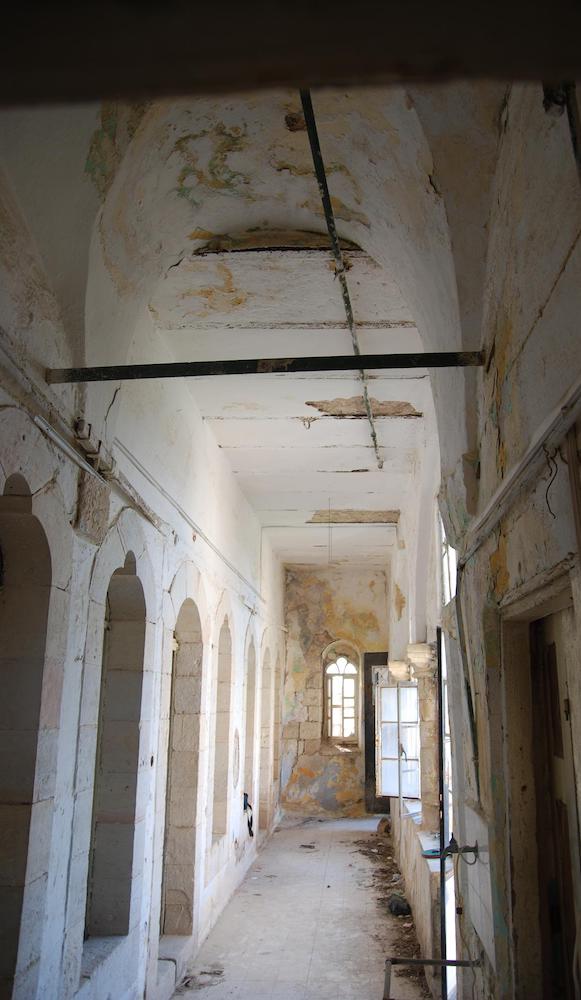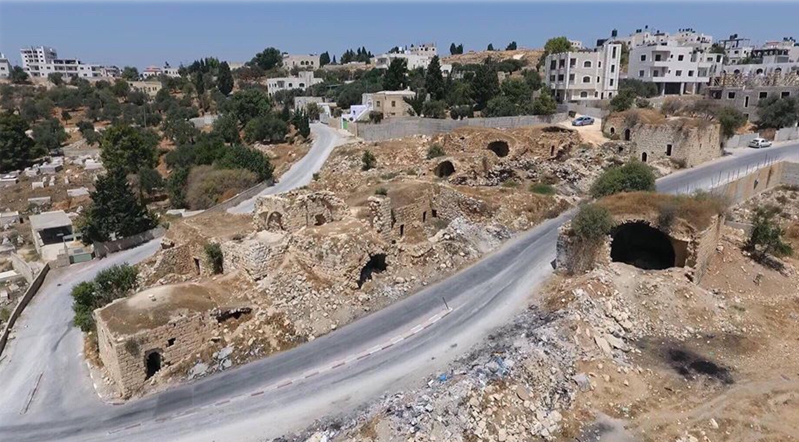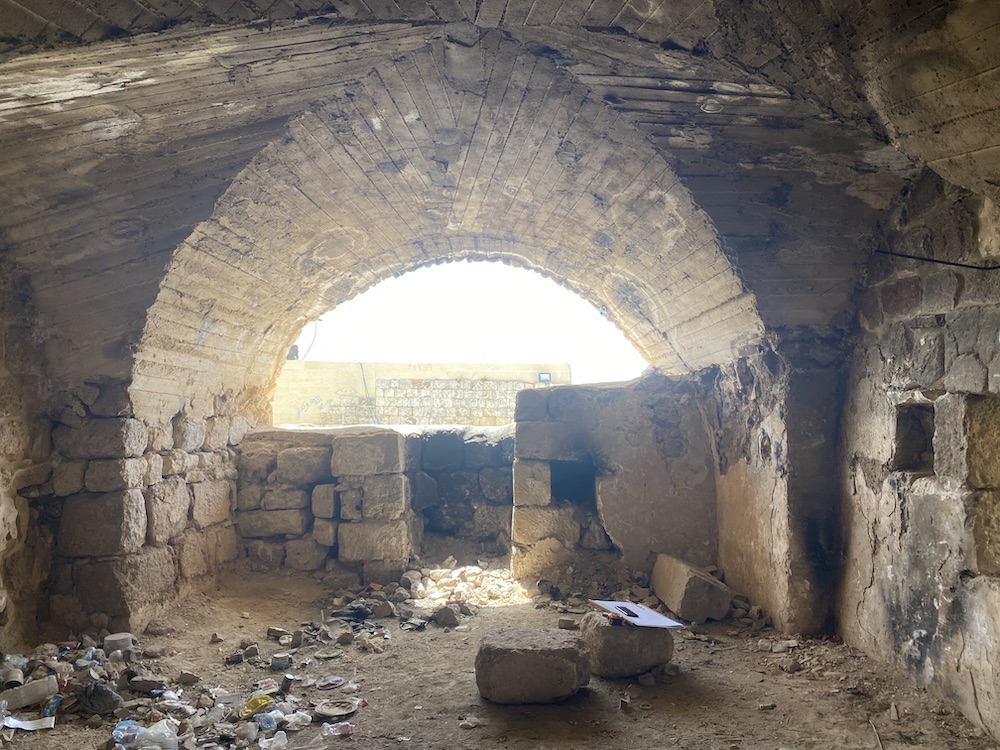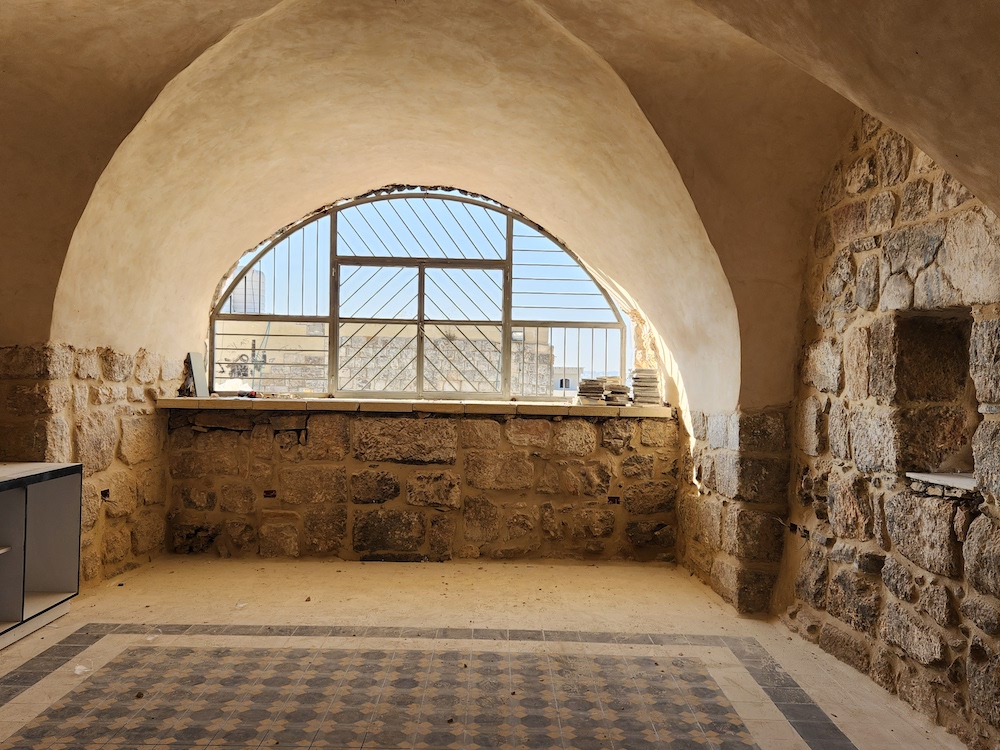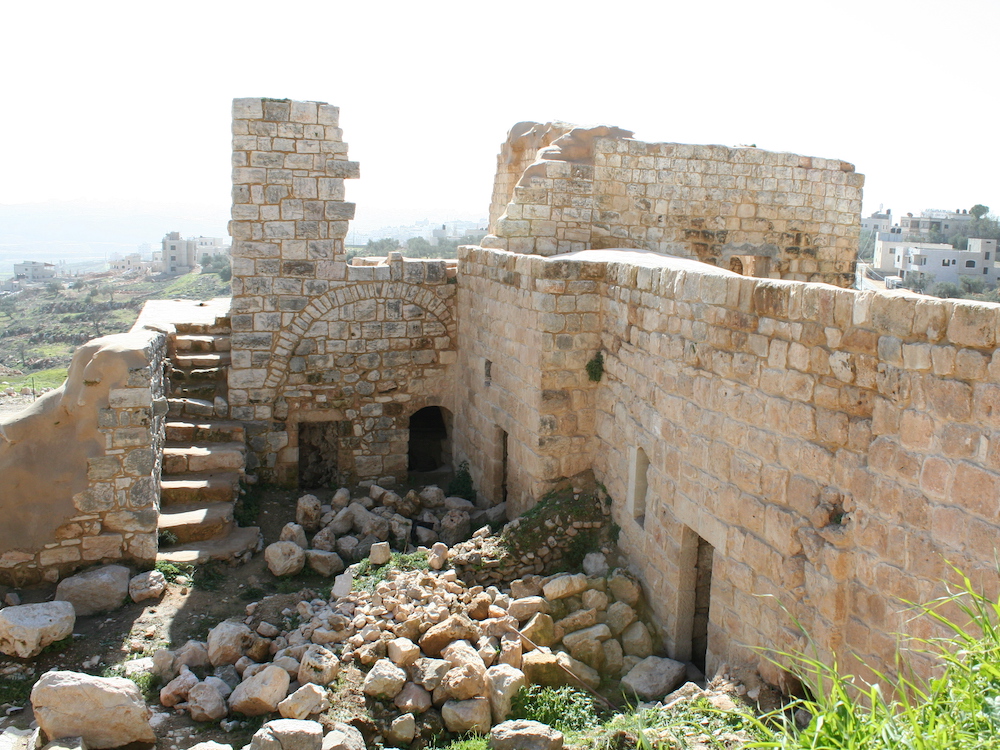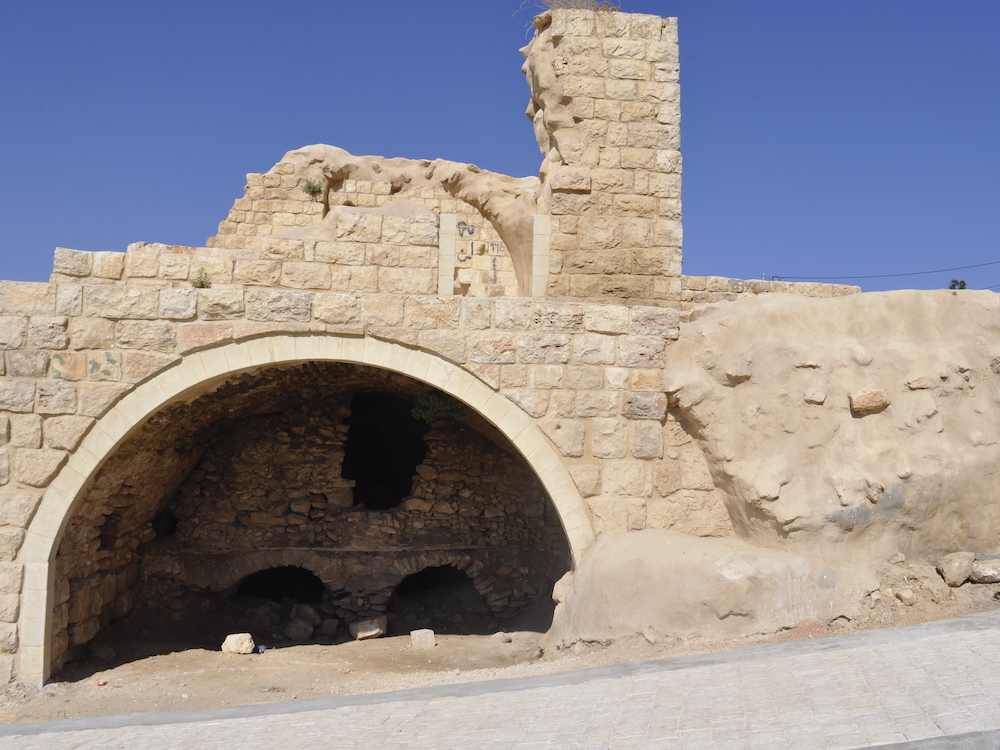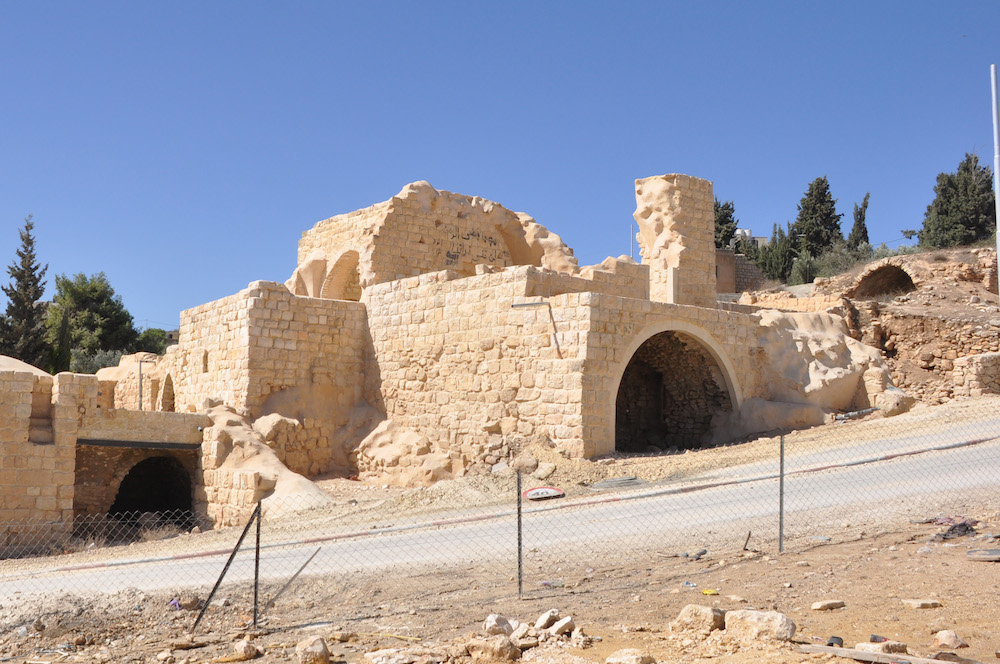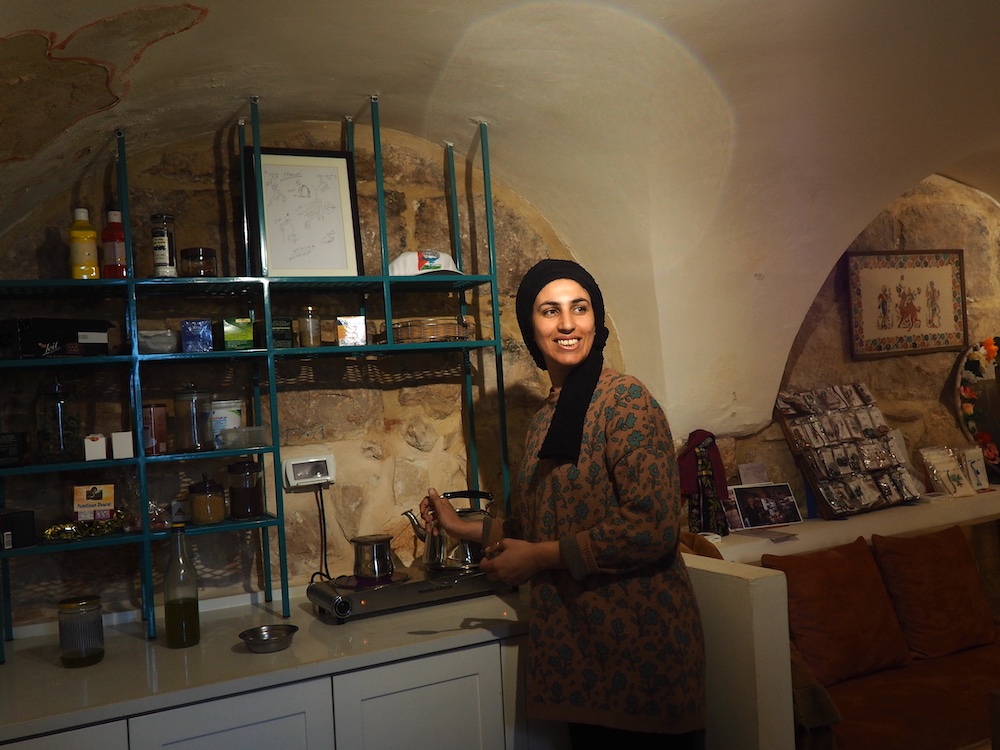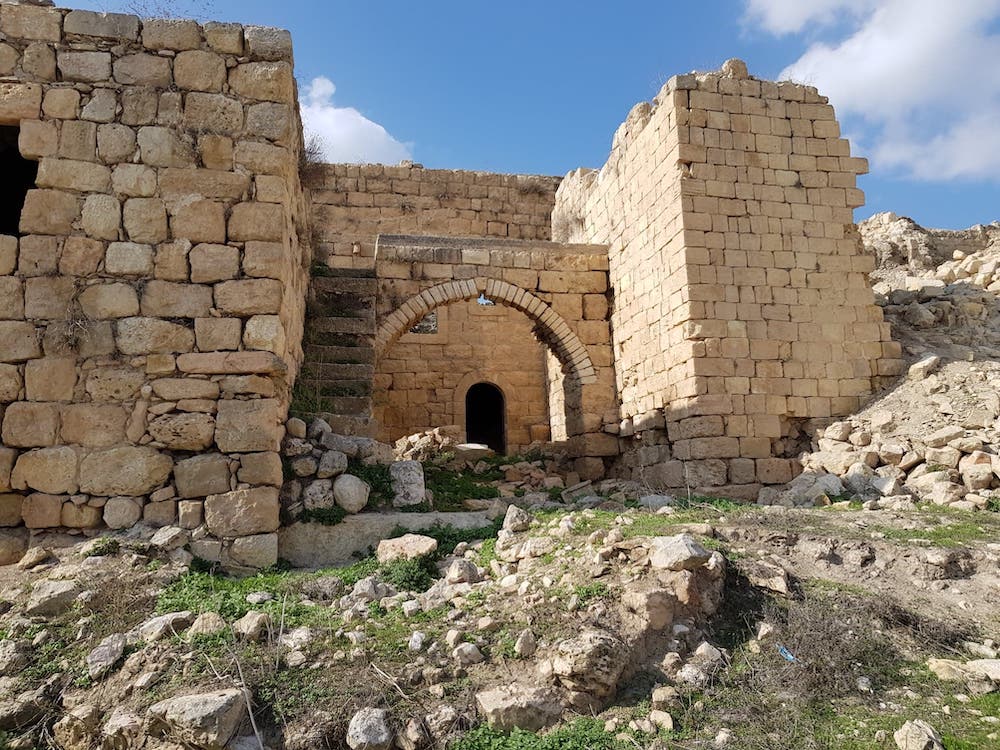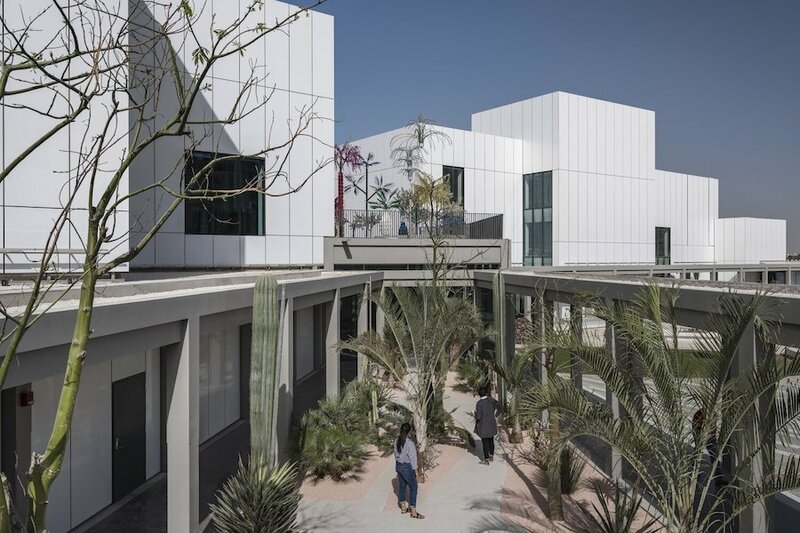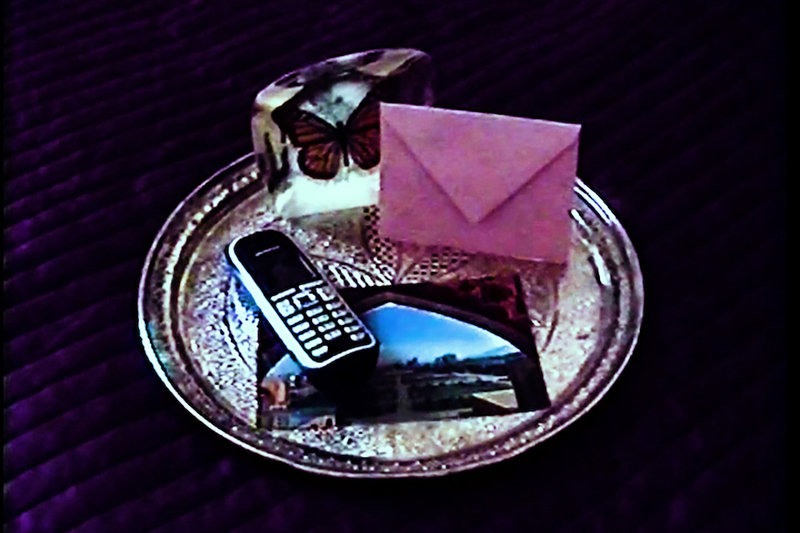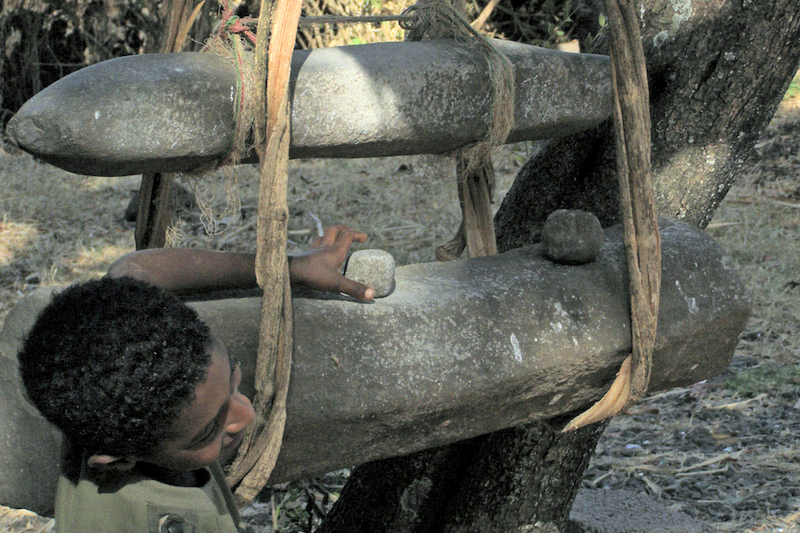Photos by Eleonora Vio
Since its inception in 1991, Riwaq has focused on the challenging complexities of preserving Palestinian collective memory through projects that document and restore architectural heritage sites across the West Bank and Gaza. Through initiatives such as the 50-Village Rehabilitation Project and the Life Jacket Project, the center “has turned the field of heritage to a medium of thinking of urgent and emergent socio-economic-cultural-political concerns.” Author Eleonora Vio provides both context and insight into the critical work of the center through research and conversations with Riwaq’s director Shata Safi. She also profiles story teller Fida 'Ataya and social activist Linda Farraj, illustrating the importance of their contributions and their connections to the work of the Riwaq center.
The structure of the Riwaq is an emblematic aspect of Islamic architecture worldwide, consisting of an arcade, or a portico, open at least on one side. But the term also holds a much deeper role and significance, as it is the name of an NGO that has become a key player within the Palestinian context. Founded in 1991 thanks to the staggering intuition of Suad Amiry, a multi-awarded novelist and a renowned Palestinian architect, Riwaq is a center for the preservation of Palestinian collective memory through projects that document and restore architectural heritage across the West Bank, Jerusalem, and the Gaza strip.
Amiry was born in Damascus in 1951 to a Syrian mother and a Palestinian father. She continued commuting between Syria, Egypt, and Jordan until 1981, when she enrolled at an architectural course at Birzeit University and decided to settle down in Ramallah, the de facto administrative capital of Palestine, where she has been living ever since.
“Suad was raised listening to her father's stories about Jaffa, from which he had to escape in the aftermath of the Nakba Nakba The Nakba (Arabic: an-Nakbah, lit. "The Catastrophe") is the term used for the ethnic cleansing of Palestinians during the 1948 Palestine war through their violent displacement and dispossession of land, property and belongings, along with the destruction of their society, culture, identity, political rights, and national aspirations.and the establishment of the state of Israel in 1948, and about Jerusalem, a promised and likewise prohibited fruit for most Palestinians living in Gaza and the West Bank,” Riwaq's director Shata Safi tells me, as we meet in the beautiful ancient building, in the core of Ramallah that has housed Riwaq for many years. “Hence, it was the combination of her childhood's broken memories and the overall tragic history of our land that pushed her to do something and, by using her skills and know-how, fill the gaps.” Everyone who knows Amiry would remember her saying: “Israel torn down nearly 400 historic centers during the Nakba, hence I will reclaim, document, and rehabilitate another 400 throughout the West Bank, Gaza, and Jerusalem.” This was just the starting point of a non-profit organization that throughout the decades was able to evolve and add many layers to this primary concept.
First, it was a diverse team of students, architects, archaeologists and historians that embarked on a ten-year long project (1994 – 2004), aimed at thoroughly documenting historical buildings across rural areas of Palestine. This extraordinary journey culminated in 2006 with the compilation of the Riwaq registry, which included 50,230 historic buildings across 16 cities and 406 villages, along with the publication of three volumes that included their detailed histories, maps, and photos. “It has always been the case that [we only have] orientalist or colonial writing about Palestine,” Safi rebuffs, “that's why we wanted to produce knowledge from our own eyes and with our own identity.” But even if Amiry's dream had already been partially achieved, Riwaq's ambitions were, again, much bigger.
All images copyright of Riwaq - Centre for Architectural Conservation
“Riwaq started as a database, but our goal was to set facts on the ground, because people need to see change in their lives and this can only come if cultural heritage is seen as a pillar for socio-economic development,” Safi continues with a soft-spoken but, likewise, determined tone of voice. “That's why, in the aftermath of the second Intifada, when thousands of Palestinians lost their jobs, we started what we call job creation through a conservation program.” Architectural restoration had the double advantage of being both a highly labor intensive activity, based on the manual work of skilled and unskilled workers, and being founded upon the use of local materials and locally produced architectural details. It not only provided onsite jobs for workers, but also generated income for Palestine’s economy: this is how conservation can become a real vehicle for change. Riwaq's approach has remained unaltered since.
Another aspect that marked its work throughout the years stems from the Registry's outcome itself: roughly 50% of the historic buildings in rural areas in the West Bank and Gaza are located in or around 50 villages. “Why don't we focus on these 50 centers, as a base on which to draw an alternative Palestinian map, counting on new cooperative matrices and networks and on a different understanding of urban spaces, buildings and individuals?” Amiry and her peers wondered.” It was Birzeit—the village near the prominent University attended by Riwaq's founder—that would be chosen as a pilot project, given its proximity with the academic institution and with the city of Ramallah, but also its fairly mixed balance between Christian and Muslim residents.
The project was designed to integrate the historic center within its territorial context and sought to widen the choices and opportunities of the local community by improving the general built environment and the living conditions of both existing and future occupants and businesses. For its intervention in this village, Riwaq was awarded the Aga Khan Award for Architecture in 2013, which included the following motivation:
This is an intervention on an already existent village with people already living there. There was a very strong connection between what was projected and the people who were there. . . What was done there was a reinterpretation and a new configuration in response to articulated new and different needs . . . there was no presumption of doing everything new nor grandiose ideas . . . This is, therefore, a project that will have continuity and future evolution.

Copyright Riwaq - Centre for Architectural Conservation
So far, Riwaq has worked with 20 out of the 50 villages that the project set out to enliven. Each of them has created some rehabilitation projects that target the improvement of services, infrastructure, and living conditions of the public and private surrounding spaces. “Apart from the number of existing historic buildings, we prioritize villages where heritage is strongly linked to agriculture, crafts, and local industries, and where there are strong community-based organizations,” says Safi.
In order to begin the process, Riwaq usually approaches village residents through the intermediation of the local councils or municipalities. In collaboration with these parties, they organize visual presentations that show how places similar to theirs have been previously and successfully restored and how such works benefited the communities themselves. “We always say that cultural heritage is the real physical factor that defines our identity, despite the Israeli attempts to destroy it, because that's the only living proof of our existence,” Safi claims. “Also, when people see they can directly benefit from cultural heritage, for instance newly married couples that can imagine expanding their family within some restored ancient house they inherited, it's easier to speak to them.”
Underneath the broader concept of this “50 villages” project, there is the so-called “life jacket project” that addresses rural villages around Jerusalem. It is based, again, on the preservation and the rehabilitation of the cultural heritage as the main means for socio-economic development, but its additional value consists in the idea of “clustering”: looking at these villages not as separate, but as if they were one.

Copyright Riwaq - Centre for Architectural Conservation
In order to understand what is behind this ongoing evolution in Riwaq's thinking, we should go back to the concept of re-mapping. “Mapping in the Palestinian case can be seen as offensive, because it immediately refers to the administrative division—and the following fragmentation—derived from the Oslo Accords, with checkpoints and bypass roads that badly affect our daily lives and work. Hence we imagined an imaginary map that is not only in our heads but also present on the ground,” Safi states, this time visibly moved. “Linking the historic centers by creating a common space within neglected agricultural lands, as we call them, is crucial.” Safi is referring to the fact that people from villages—such as Al Jib, Kafr ‘Aqab, Qalandiya, Beit Iksa—used to have a strong connection between themselves and with the city of Jerusalem, and were never really connected to Ramallah. But things were completely overturned by the Separation Wall in 2002. “It has not only changed the physicality of the spaces but also their demography and economic situation. On the one hand, people used to marry each other and, on the other hand, they were involved in activities, such as agriculture and pottery, that disappeared entirely after that,” she adds. “We're reclaiming these spaces, bringing communities together and encouraging farmers and pottery-makers to connect the historic centers to their original functions.”
If Safi, like most Palestinians, argues that the main daily challenge Riwaq faces is the Israeli occupation, which affects not only people's freedom of movement but also the relationship they hold with their past history, she highlights some other connected problems as well. As a consequence of the Oslo Accords, Palestinians are only allowed to build in Area A (18%), under full civil and military Palestinian control, and B (22%), under Palestinian civil control and joint Israeli-Palestinian security control, which together account for 40% of the entire West Bank, therefore there's a lot of urban pressure on land that comes at a very high price.
Given the lack of proper planning and the flaws in the legislation around cultural heritage, many historic buildings have been demolished to build roads, mosques, or high rise buildings. In 2004, Riwaq and the institute of Law at Birzeit University were awarded a tender to draft a new law, which was passed but has not yet been ratified. If the law that is still in place (based on Jordanian revisions of the former British law, nd) only protects antiquities that are dated prior to 1700 AD, disregarding the entire Ottoman period and any subsequent years even on sites declared as “antiquities”, the new one has some gaps too, because it only covers what was built prior to 1917 (e.g. the year of the Balfour Declaration that ratified the British support to the establishment of a Jewish nation in Palestine). “Riwaq's building was constructed in 1932 and, in order to have it protected, we had to collect so many proofs of its authenticity, its aesthetic, and historic value,” Shati confirms. “Sadly, because of this problem, we lost lots of single historic buildings built between the 20s and 30s.”
Today, with the continuing war in Gaza and violence and tension rising in both the West Bank and Jerusalem, it is not easy for Riwaq’s team to stay focused. “Everyday we try to come in with a smile. People need us. We do it because we know that one day, if we fail, it will be some other Palestinians that help us,” Safi adds. “Personally, if it wasn't for Riwaq, I would have struggled to find my own place. What I'm doing here is directly contributing to the enforcement of Palestinian rights and identity and, implicitly, it's endorsing the Palestinian struggle, too.” In this way, it is clear that Riwaq is not just a pillar of Islamic architecture, or an independent organization that fully rehabilitates historical heritage, but also a tool for cultural resistance.
All images copyright Riwaq - Centre for Architectural Conservation
Riwaq started the rehabilitation and conservation of the historic center of Kafr ‘Aqab in 2017. The project was initiated with a preventive conservation phase that consisted of reconstructing deteriorated structures and buildings and redefining the courtyards. Later it expanded the area of work and ended up including other parts of the village.
Today its scope mainly focuses on the active collaboration with institutions, such as Dalia Association and Seraj Library Project, to activate the historic buildings and the spaces in-between. Particularly, thanks to Fida 'Ataya, a local storyteller, oral history is being used as a tool to not only attain a deeper understanding of life in the old village, but also to link different generations with each other, as well as the community of Kafr ‘Aqab with the historic center it had previously lost connection with.
“My grandmother Sophia, who passed away when I was only nine-years-old, was my first storytelling teacher. After her death, I started asking elders to share their stories with me and that's how, as I turned 20, I would call myself a professional storyteller,” says Fida 'Ataya, who has just turned 36, during a meeting inside the Seraj cultural hub, where she founded her own Storytelling Academy. “The partnership with Riwaq started when I was invited to join a walking trail and at the end of it, as we were seated under the shade of a beautiful oak tree, I got struck by the idea that we should dig deeper into its story. Thanks to the imagination and the folktales of the villagers, a few months later we put up a storytelling performance. It was in the aftermath of that successful experience that Riwaq asked me to do a similar thing here in Kafr ‘Aqab and I decided—not without facing challenges at first—to focus on the differences between men and women storytellers. This experiment was called Adam and Eve.”
Photo by Eleonora Vio
Fida's teaching is based on three principles: search, which means collecting; cure, which means tailoring and editing the story based on tales people collected; and share, which culminates in a stage performance. Traditionally, Palestinian women would only share stories in private and would seldom exhibit in public. But things have changed with the passing of time. “By chance all my students today are women,” Fida claims ecstatically. “I'm so happy they understood how important storytelling is for the future of their own legacy and existence!” Since in the Lifejacket project—of which Kafr ‘Aqab is part—villages are imagined as a cluster unit, Riwaq has recently asked Fida to export the art of storytelling to the nearby communities, to help citizens reconnect both with their forgotten cultural heritage and their identity.
All images copyright Riwaq - Centre for Architectural Conservation
One of the most ancient and permanently inhabited settlements in Palestine, Al Jib lies only 9 kilometers north-west of Jerusalem and for its strategic location in the midst of four fertile valleys, for centuries it was deemed as its primary food basket. Then, with the 1967 Israeli occupation, the construction of the Separation Wall, and the gradual and ongoing expansion of the outlawed Jewish settlements, Al Jib lost about two-thirds of its population who migrated abroad to find better life and job opportunities, along with a good chunk of its agricultural potential. As part of the Lifejacket project, Riwaq put a lot of effort into rehabilitating this historic center, a process that is still ongoing, with its vast number of ancient buildings and archaeological sites spanning throughout centuries.
But its main mission would have never been accomplished, had they not found someone ready to “activate” it. “We are very lucky to have met Samer Abed Rabbo, the mayor of Al Jib, and Linda Farraj, a social activist and a leading member of the municipality,” states Dana Ozaina, one of the main architects working for Riwaq, during a recent visit to the village. “It's a win-win situation because we were looking for partners, who could bring life back to the historic center, as it was still abandoned and far from most Palestinian people's mental map, and they were in need of a headquarters where they could set up their initiatives.” The mayor adds: “Despite the fact that we've been constantly under pressure, because the Jewish Israelis claim this village for themselves, elderly people from Al Jib have been extraordinary in the preservation of the history of this place,” he says, proudly. “They published books that were presented abroad and in the early 2000s they created a museum with artifacts collected from their own houses and lands.”
Photo by Eleonora Vio
Nonetheless, no one would disagree that, today, the beating heart of Al Jib is Linda. “Everyone knows me as the daughter of the village because I was born and raised here and I never left,” she says smiling. “I've always felt engaged with this place and one of the first things I did was to store and collect all its stories and traditions. Today I focus mostly on the younger generations, for whom—inside these beautiful spaces restored by Riwaq—I organize reading classes, but also courses of Dabka (a traditional Palestinian dance) and board games.” In addition, local filmmakers and photographers have been using the Al Jib historic center as a setting for their artworks and, in these tough times, the municipality—again led by Linda—is organizing psychotherapeutic sessions for women whose sons or husbands have been either killed or arrested by the Israeli armed forces.
